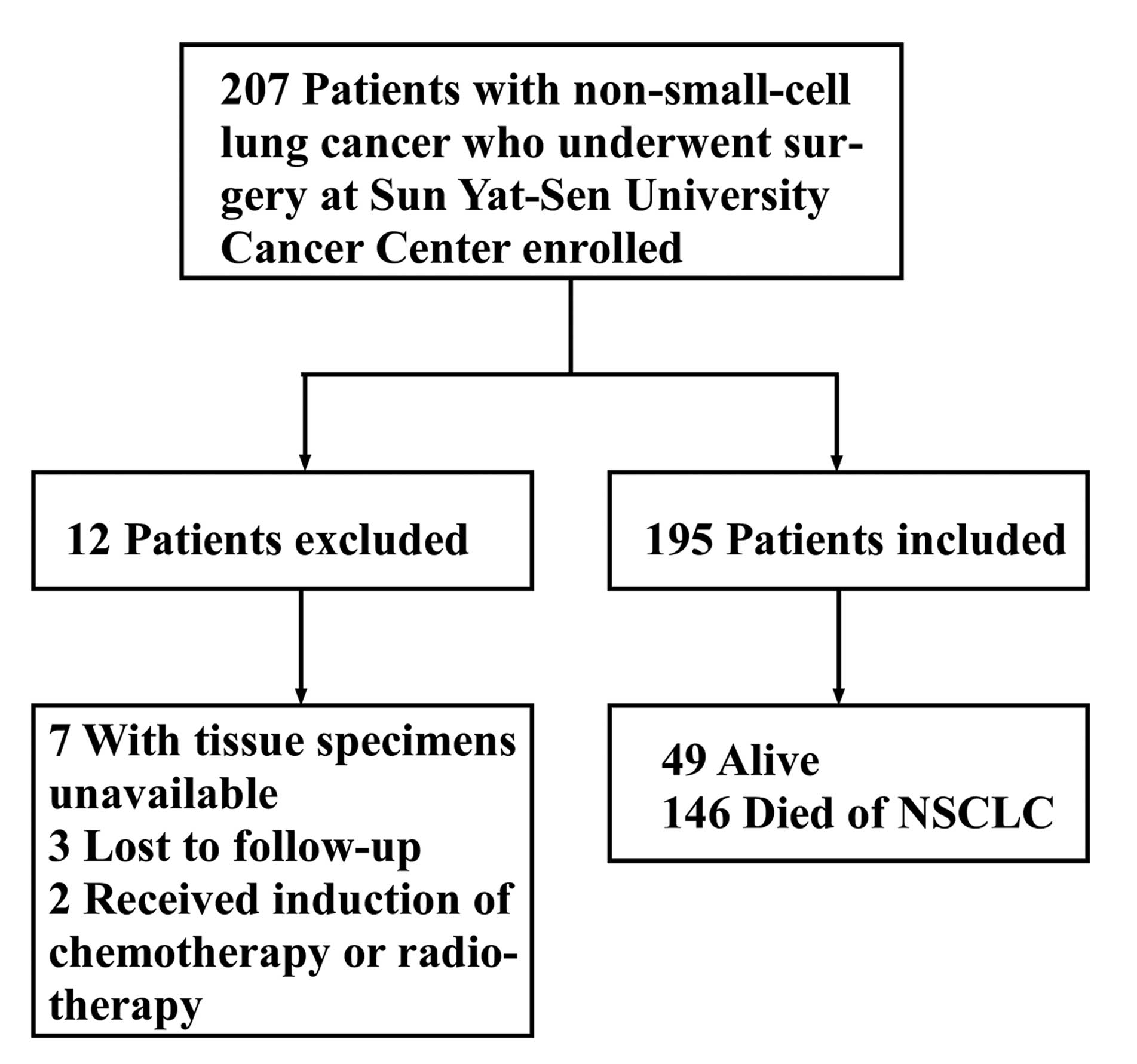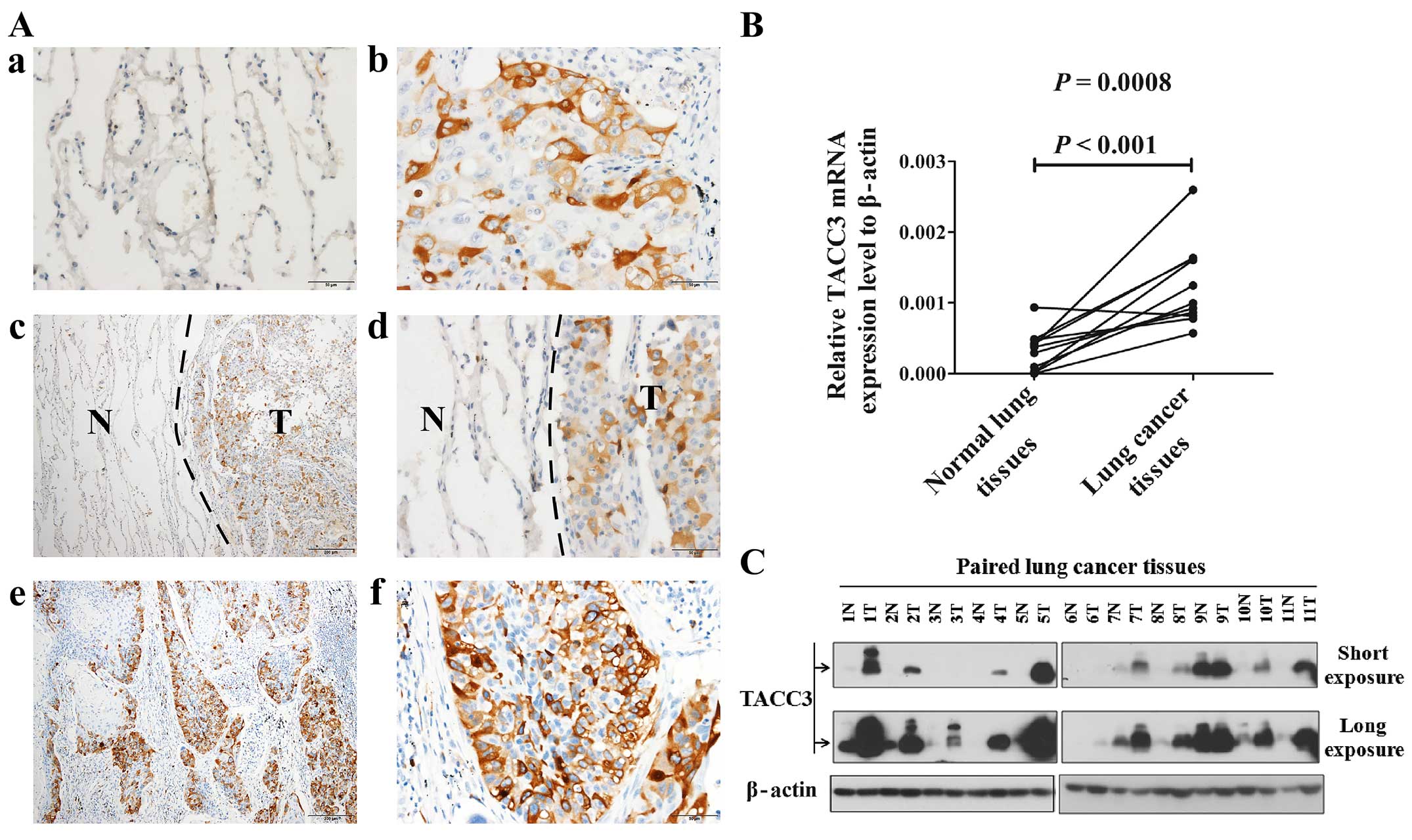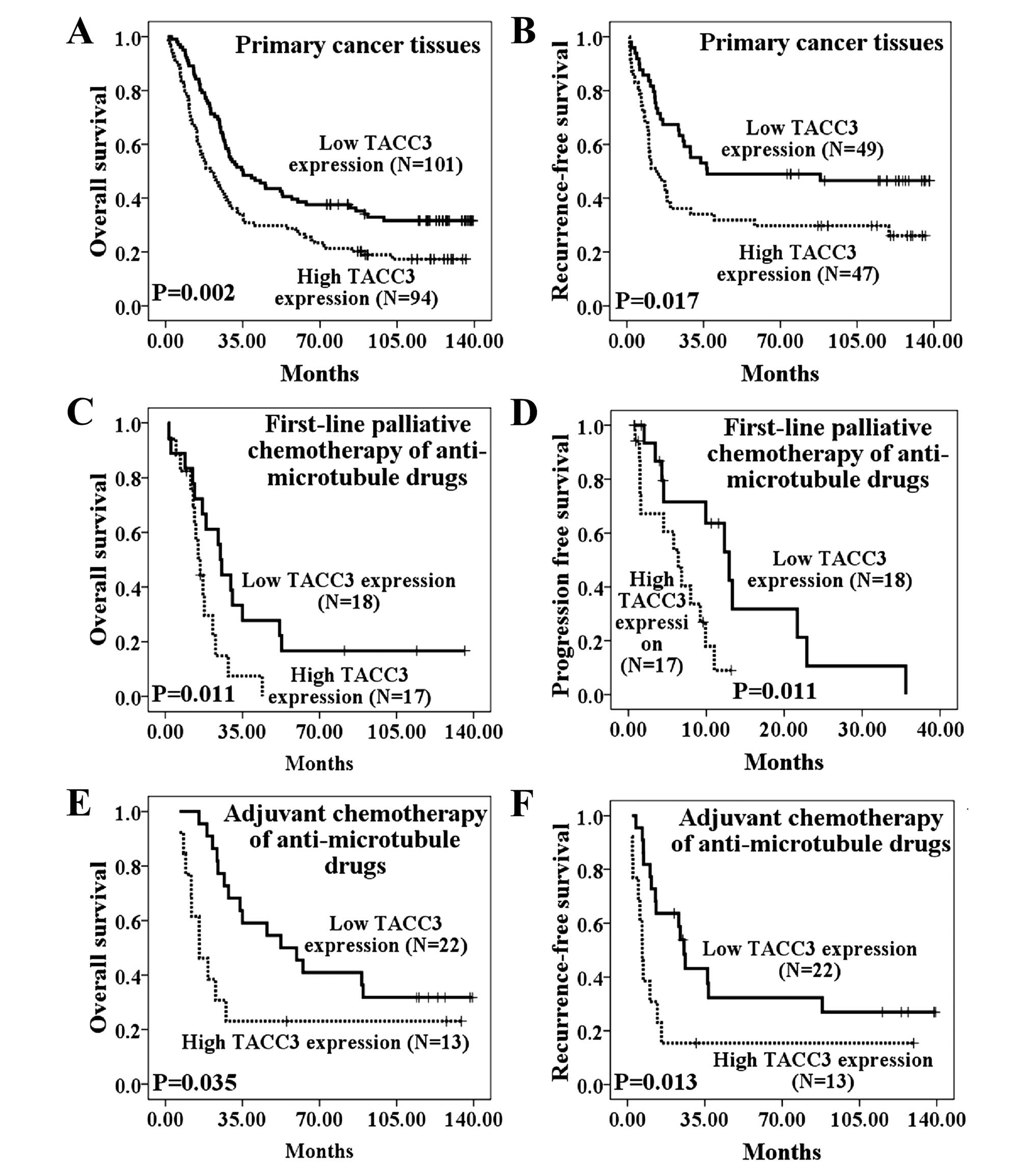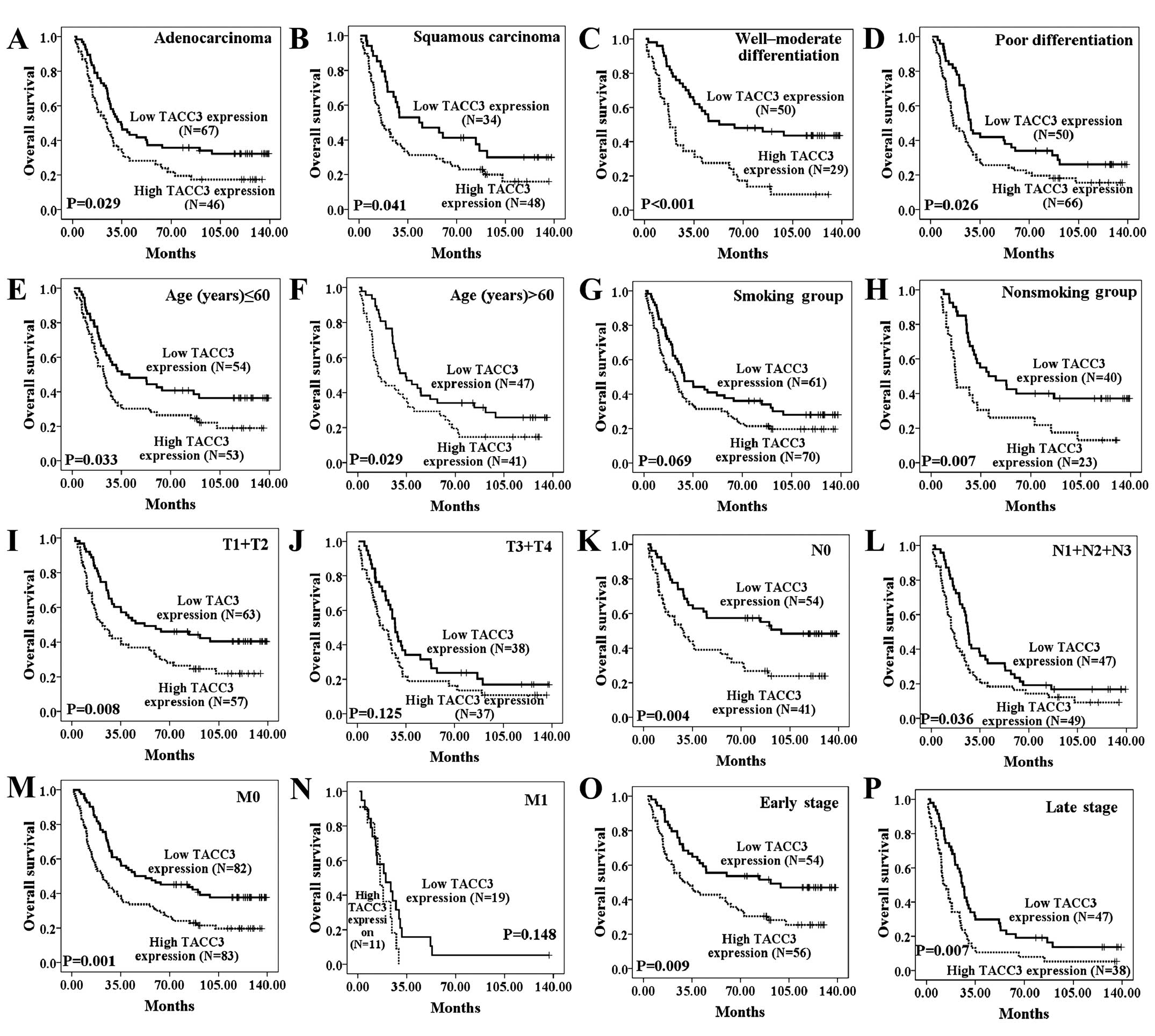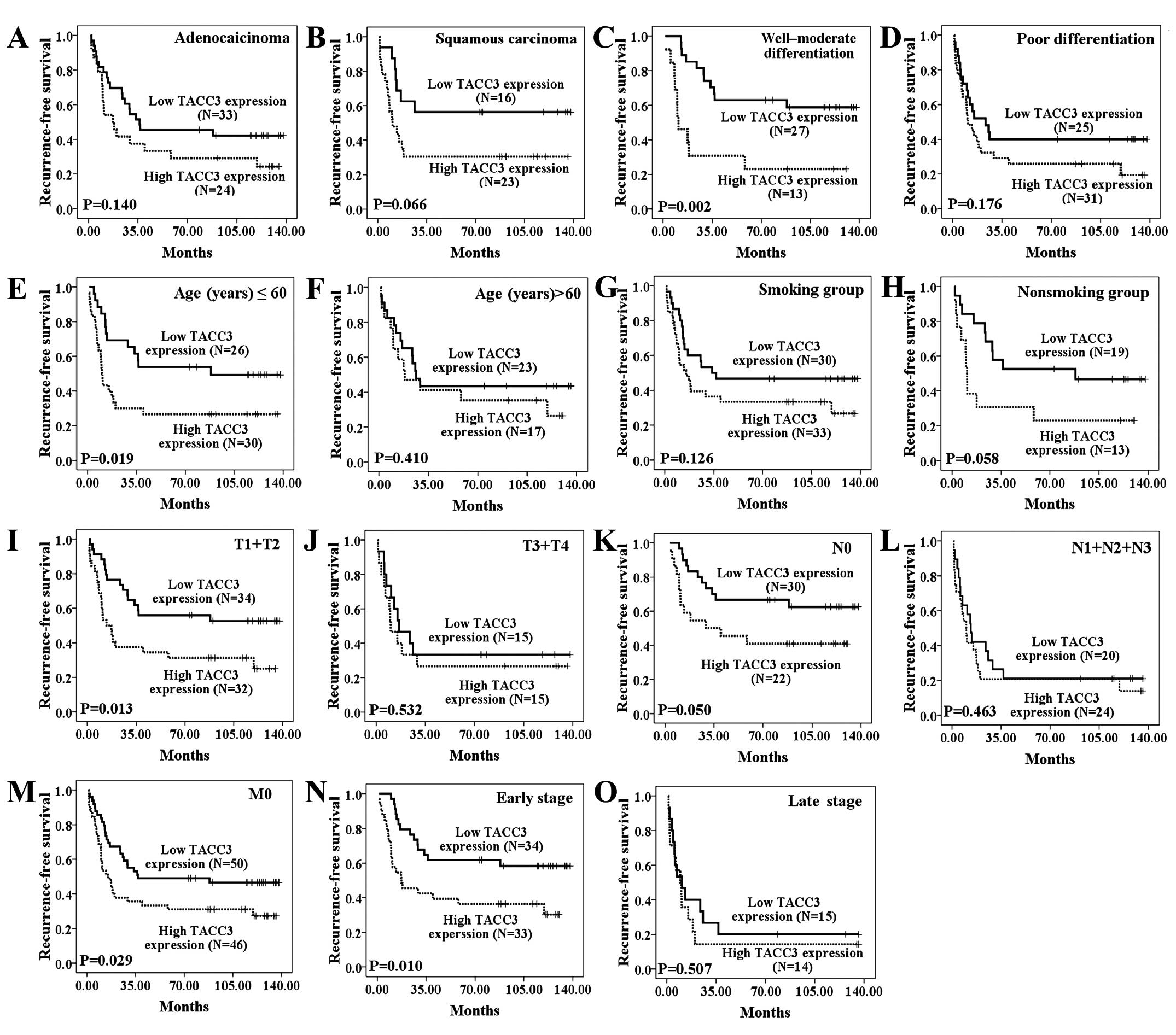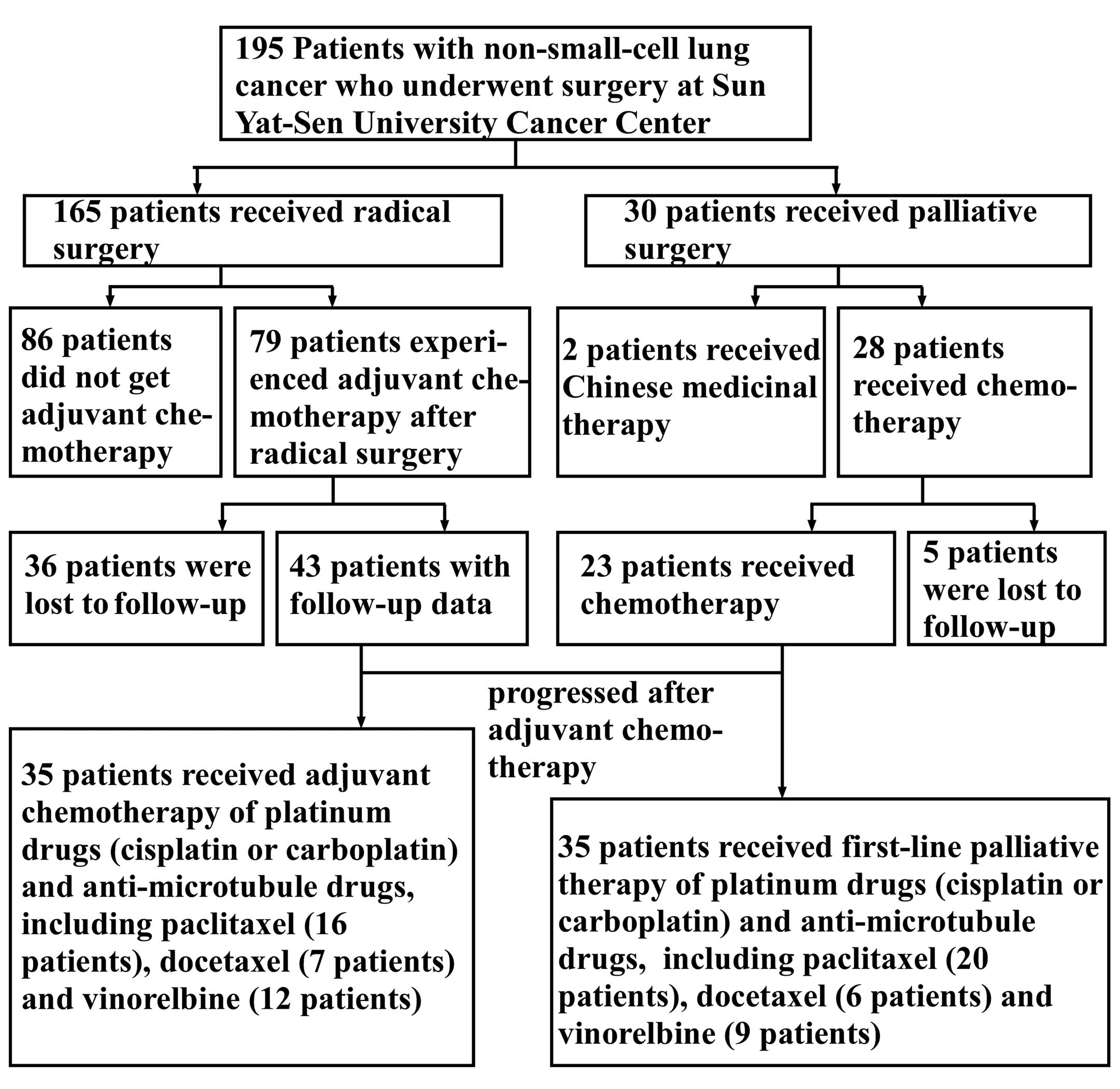|
1
|
Siegel R, Ma J, Zou Z and Jemal A: Cancer
statistics, 2014. CA Cancer J Clin. 64:9–29. 2014. View Article : Google Scholar : PubMed/NCBI
|
|
2
|
Gergely F: Centrosomal TACCtics.
BioEssays. 24:915–925. 2002. View Article : Google Scholar : PubMed/NCBI
|
|
3
|
Peset I and Vernos I: The TACC proteins:
TACC-ling microtubule dynamics and centrosome function. Trends Cell
Biol. 18:379–388. 2008. View Article : Google Scholar : PubMed/NCBI
|
|
4
|
Ha GH, Kim JL and Breuer EK: Transforming
acidic coiled-coil proteins (TACCs) in human cancer. Cancer Lett.
336:24–33. 2013. View Article : Google Scholar : PubMed/NCBI
|
|
5
|
Albee AJ and Wiese C: Xenopus TACC3/maskin
is not required for microtubule stability but is required for
anchoring microtubules at the centrosome. Mol Biol Cell.
19:3347–3356. 2008. View Article : Google Scholar : PubMed/NCBI
|
|
6
|
van der Vaart B, Akhmanova A and Straube
A: Regulation of microtubule dynamic instability. Biochem Soc
Trans. 37:1007–1013. 2009. View Article : Google Scholar : PubMed/NCBI
|
|
7
|
Duensing S, Lee BH, Dal Cin P and Münger
K: Excessive centro-some abnormalities without ongoing numerical
chromosome instability in a Burkitt's lymphoma. Mol Cancer.
2:30–36. 2003. View Article : Google Scholar
|
|
8
|
Trachana V, van Wely KH, Guerrero AA,
Fütterer A and Martínez-A C: Dido disruption leads to centrosome
amplification and mitotic checkpoint defects compromising
chromosome stability. Proc Natl Acad Sci USA. 104:2691–2696. 2007.
View Article : Google Scholar : PubMed/NCBI
|
|
9
|
Gergely F, Karlsson C, Still I, Cowell J,
Kilmartin J and Raff JW: The TACC domain identifies a family of
centrosomal proteins that can interact with microtubules. Proc Natl
Acad Sci USA. 97:14352–14357. 2000. View Article : Google Scholar : PubMed/NCBI
|
|
10
|
Raff JW: Centrosomes and cancer: Lessons
from a TACC. Trends Cell Biol. 12:222–225. 2002. View Article : Google Scholar : PubMed/NCBI
|
|
11
|
Still IH, Vince P and Cowell JK: The third
member of the transforming acidic coiled coil-containing gene
family, TACC3, maps in 4p16, close to translocation breakpoints in
multiple myeloma, and is upregulated in various cancer cell lines.
Genomics. 58:165–170. 1999. View Article : Google Scholar : PubMed/NCBI
|
|
12
|
Still IH, Hamilton M, Vince P, Wolfman A
and Cowell JK: Cloning of TACC1, an embryonically expressed,
potentially transforming coiled coil containing gene, from the 8p11
breast cancer amplicon. Oncogene. 18:4032–4038. 1999. View Article : Google Scholar : PubMed/NCBI
|
|
13
|
Cheng S, Douglas-Jones A, Yang X, Mansel
RE and Jiang WG: Transforming acidic coiled-coil-containing protein
2 (TACC2) in human breast cancer, expression pattern and
clinical/prognostic relevance. Cancer Genomics Proteomics. 7:67–73.
2010.PubMed/NCBI
|
|
14
|
Conte N, Delaval B, Ginestier C, Ferrand
A, Isnardon D, Larroque C, Prigent C, Séraphin B, Jacquemier J and
Birnbaum D: TACC1-chTOG-Aurora A protein complex in breast cancer.
Oncogene. 22:8102–8116. 2003. View Article : Google Scholar : PubMed/NCBI
|
|
15
|
Line A, Slucka Z, Stengrevics A, Li G and
Rees RC: Altered splicing pattern of TACC1 mRNA in gastric cancer.
Cancer Genet Cytogenet. 139:78–83. 2002. View Article : Google Scholar
|
|
16
|
Dhanasekaran SM, Barrette TR, Ghosh D,
Shah R, Varambally S, Kurachi K, Pienta KJ, Rubin MA and Chinnaiyan
AM: Delineation of prognostic biomarkers in prostate cancer.
Nature. 412:822–826. 2001. View
Article : Google Scholar : PubMed/NCBI
|
|
17
|
Sadek CM, Pelto-Huikko M, Tujague M,
Steffensen KR, Wennerholm M and Gustafsson JA: TACC3 expression is
tightly regulated during early differentiation. Gene Expr Patterns.
3:203–211. 2003. View Article : Google Scholar : PubMed/NCBI
|
|
18
|
Conte N, Charafe-Jauffret E, Delaval B,
Adélaïde J, Ginestier C, Geneix J, Isnardon D, Jacquemier J and
Birnbaum D: Carcinogenesis and translational controls: TACC1 is
down-regulated in human cancers and associates with mRNA
regulators. Oncogene. 21:5619–5630. 2002. View Article : Google Scholar : PubMed/NCBI
|
|
19
|
Ma XJ, Salunga R, Tuggle JT, Gaudet J,
Enright E, McQuary P, Payette T, Pistone M, Stecker K, Zhang BM, et
al: Gene expression profiles of human breast cancer progression.
Proc Natl Acad Sci USA. 100:5974–5979. 2003. View Article : Google Scholar : PubMed/NCBI
|
|
20
|
Lauffart B, Vaughan MM, Eddy R, Chervinsky
D, DiCioccio RA, Black JD and Still IH: Aberrations of TACC1 and
TACC3 are associated with ovarian cancer. BMC Womens Health.
5:8–17. 2005. View Article : Google Scholar : PubMed/NCBI
|
|
21
|
Peters DG, Kudla DM, Deloia JA, Chu TJ,
Fairfull L, Edwards RP and Ferrell RE: Comparative gene expression
analysis of ovarian carcinoma and normal ovarian epithelium by
serial analysis of gene expression. Cancer Epidemiol Biomarkers
Prev. 14:1717–1723. 2005. View Article : Google Scholar : PubMed/NCBI
|
|
22
|
Arlot-Bonnemains Y, Baldini E, Martin B,
Delcros JG, Toller M, Curcio F, Ambesi-Impiombato FS, D'Armiento M
and Ulisse S: Effects of the Aurora kinase inhibitor VX-680 on
anaplastic thyroid cancer-derived cell lines. Endocr Relat Cancer.
15:559–568. 2008. View Article : Google Scholar : PubMed/NCBI
|
|
23
|
Duncan CG, Killela PJ, Payne CA, Lampson
B, Chen WC, Liu J, Solomon D, Waldman T, Towers AJ, Gregory SG, et
al: Integrated genomic analyses identify ERRFI1 and TACC3 as
glioblastoma-targeted genes. Oncotarget. 1:265–277. 2010.
View Article : Google Scholar : PubMed/NCBI
|
|
24
|
Stewart JP, Thompson A, Santra M, Barlogie
B, Lappin TR and Shaughnessy J Jr: Correlation of TACC3, FGFR3,
MMSET and p21 expression with the t(4;14)(p16.3;q32) in multiple
myeloma. Br J Haematol. 126:72–76. 2004. View Article : Google Scholar : PubMed/NCBI
|
|
25
|
Jung CK, Jung JH, Park GS, Lee A, Kang CS
and Lee KY: Expression of transforming acidic coiled-coil
containing protein 3 is a novel independent prognostic marker in
non-small cell lung cancer. Pathol Int. 56:503–509. 2006.
View Article : Google Scholar : PubMed/NCBI
|
|
26
|
McShane LM, Altman DG, Sauerbrei W, Taube
SE, Gion M and Clark GM; Statistics Subcommittee of the NCI-EORTC
Working Group on Cancer Diagnostics: Reporting recommendations for
tumor marker prognostic studies (REMARK). J Natl Cancer Inst.
97:1180–1184. 2005. View Article : Google Scholar : PubMed/NCBI
|
|
27
|
Kuang BH, Zhang MQ, Xu LH, Hu LJ, Wang HB,
Zhao WF, Du Y and Zhang X: Proline-rich tyrosine kinase 2 and its
phosphorylated form pY881 are novel prognostic markers for
non-small-cell lung cancer progression and patients' overall
survival. Br J Cancer. 109:1252–1263. 2013. View Article : Google Scholar : PubMed/NCBI
|
|
28
|
Gangisetty O, Lauffart B, Sondarva GV,
Chelsea DM and Still IH: The transforming acidic coiled coil
proteins interact with nuclear histone acetyltransferases.
Oncogene. 23:2559–2563. 2004. View Article : Google Scholar : PubMed/NCBI
|
|
29
|
Piekorz RP, Hoffmeyer A, Duntsch CD, McKay
C, Nakajima H, Sexl V, Snyder L, Rehg J and Ihle JN: The
centrosomal protein TACC3 is essential for hematopoietic stem cell
function and genetically interfaces with p53-regulated apoptosis.
EMBO J. 21:653–664. 2002. View Article : Google Scholar : PubMed/NCBI
|
|
30
|
Richter JD and Theurkauf WE: Development.
The message is in the translation. Science. 293:60–62. 2001.
View Article : Google Scholar : PubMed/NCBI
|
|
31
|
Hood FE and Royle SJ: Pulling it together:
The mitotic function of TACC3. BioArchitecture. 1:105–109. 2011.
View Article : Google Scholar : PubMed/NCBI
|
|
32
|
Ha GH, Park JS and Breuer EK: TACC3
promotes epithelial-mesenchymal transition (EMT) through the
activation of PI3K/Akt and ERK signaling pathways. Cancer Lett.
332:63–73. 2013. View Article : Google Scholar : PubMed/NCBI
|
|
33
|
Ha GH, Kim JL and Breuer EK: TACC3 is
essential for EGF-mediated EMT in cervical cancer. PLoS One.
8:e703532013. View Article : Google Scholar : PubMed/NCBI
|
|
34
|
Sadek CM, Jalaguier S, Feeney EP, Aitola
M, Damdimopoulos AE, Pelto-Huikko M and Gustafsson JA: Isolation
and characterization of AINT: A novel ARNT interacting protein
expressed during murine embryonic development. Mech Dev. 97:13–26.
2000. View Article : Google Scholar : PubMed/NCBI
|
|
35
|
McKeveney PJ, Hodges VM, Mullan RN,
Maxwell P, Simpson D, Thompson A, Winter PC, Lappin TR and Maxwell
AP: Characterization and localization of expression of an
erythropoietin-induced gene, ERIC-1/TACC3, identified in erythroid
precursor cells. Br J Haematol. 112:1016–1024. 2001. View Article : Google Scholar : PubMed/NCBI
|
|
36
|
LeRoy PJ, Hunter JJ, Hoar KM, Burke KE,
Shinde V, Ruan J, Bowman D, Galvin K and Ecsedy JA: Localization of
human TACC3 to mitotic spindles is mediated by phosphorylation on
Ser558 by Aurora A: A novel pharmacodynamic method for
measuring Aurora A activity. Cancer Res. 67:5362–5370. 2007.
View Article : Google Scholar : PubMed/NCBI
|
|
37
|
Yim EK, Tong SY, Ho EM, Bae JH, Um SJ and
Park JS: Anticancer effects on TACC3 by treatment of paclitaxel in
HPV-18 positive cervical carcinoma cells. Oncol Rep. 21:549–557.
2009.PubMed/NCBI
|
|
38
|
Schneider L, Essmann F, Kletke A, Rio P,
Hanenberg H, Schulze-Osthoff K, Nürnberg B and Piekorz RP: TACC3
depletion sensitizes to paclitaxel-induced cell death and overrides
p21WAF-mediated cell cycle arrest. Oncogene. 27:116–125.
2008. View Article : Google Scholar
|
|
39
|
Schmidt S, Schneider L, Essmann F, Cirstea
IC, Kuck F, Kletke A, Jänicke RU, Wiek C, Hanenberg H, Ahmadian MR,
et al: The centrosomal protein TACC3 controls paclitaxel
sensitivity by modulating a premature senescence program. Oncogene.
29:6184–6192. 2010. View Article : Google Scholar : PubMed/NCBI
|



